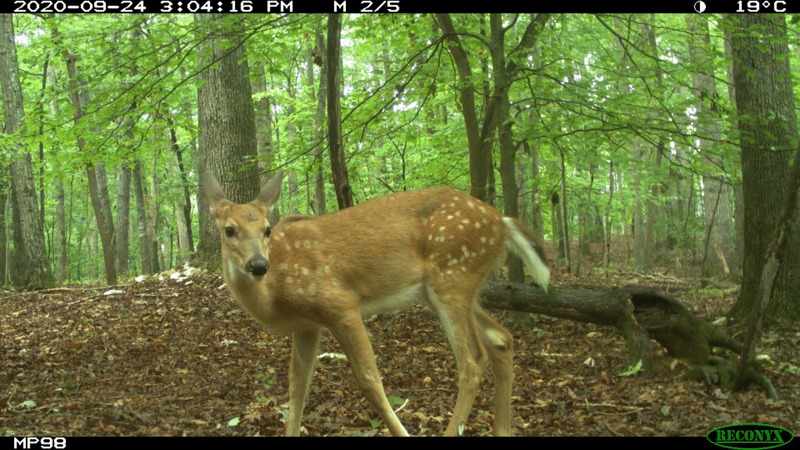Camera traps help researchers explain animal behavior during global COVID-19 lockdowns
For immediate release ‐ March 25, 2024
Contact: Kerry Irish, 919.707.9823. Images available upon request
 Photo: Snapshot USA.
Photo: Snapshot USA.
A new collaborative study using thousands of cameras around the world reveals how animal behavior changed during the COVID-19 pandemic. Specifically, the study sheds light on how animal behavior was influenced by changes in human behavior during pandemic lockdowns.
Led by the University of British Columbia, the study used data from over 5,000 camera traps to show that animal behavior changed in different ways depending on where the animals lived and what they ate.
North Carolina State University research professor [and Head of the NCMNS Biodiversity Research Lab] Roland Kays contributed data from several camera trap projects around North Carolina and across the country, including Schenck Forest in Raleigh. As human activity increased in Schenck Forest, raccoon and deer activity increased alongside it.
“What we found was that the biggest single explainer of the differences in animal behavior was how developed the landscape was in the first place,” Kays said. “Animals in urban and more developed areas are habituated to humans. They don’t really care if the presence of humans changes, and sometimes they actually increased their activity when humans increased theirs.”
However, animals in rural areas proved far more sensitive to an increased human presence. Without much prior exposure to people, animals in those areas were more likely to be skittish and reduce their activity. Carnivores in rural areas were particularly wary of people, reducing their activity significantly.
Read the full article at NC State News
For more information about our upcoming activities, conservation news and groundbreaking research, follow @NaturalSciences on Instagram and Facebook.

